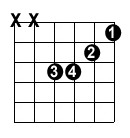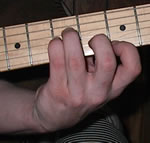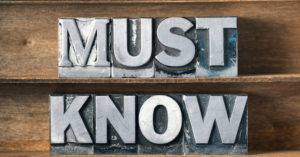 No matter which way you look at it, barre chords are unavoidable. The fact of the matter is that you won’t be able to play most songs without them.
No matter which way you look at it, barre chords are unavoidable. The fact of the matter is that you won’t be able to play most songs without them.
The reason is that you cannot play every chord using open chords. What if you wanted to play an F or B chord? How about a F# or G flat chord for that matter? You can’t do it without using a barred chord. Out of the 12 possible major chords, only 5 of them have an open chord shape. They are A, C, D, E, and G.
So, if you’re one of those people who has avoided barre chords because of their seeming difficulty, please stop procrastinating and get it over with!
In this lesson, I’ll show you how to play the four barre chords, at the minimum, that I feel you should learn. You’ll get a lot of mileage out of them and will be able to play most songs using them.
What Is A Barre Chord?
In the video below, I’ll give you an explanation of barre chords and demonstrate their use:
The Nitty Gritty
A barre chord is where we take a basic chord pattern and “move” it up the neck of the guitar to create different chords.
For example, let’s take the E chord shape:
 To move the chord pattern up the neck, we create a barre with our 1st finger. This barre, in a way, replaces the nut of your guitar. The notes that were played open to produce the E chord will now be fingered with the barre that you create with your 1st finger.
To move the chord pattern up the neck, we create a barre with our 1st finger. This barre, in a way, replaces the nut of your guitar. The notes that were played open to produce the E chord will now be fingered with the barre that you create with your 1st finger.
So, If we were to move the entire pattern up one fret it would look like this: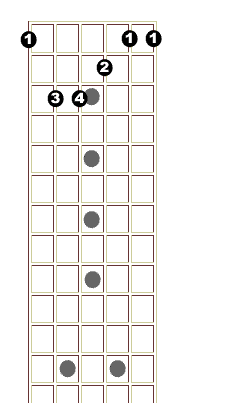
It’s the same pattern, but now that we have moved the pattern up one fret, it’s no longer an E chord. Now it’s an F chord.The reason we know that it’s an F chord is because of the root note. The root note of the chord will be the lowest note.In the E chord, the root note was the low E string played open. Now that we have moved the chord shape up one fret the note on the first fret of the low E string is now the root note. That note is an F. Therefore we know we’re dealing with an F chord.This is one of the reasons why it is helpful to actually know the names of the notes on the fretboard. We can play all 12 possible major chords with this one chord pattern by moving it up the neck.Below on the right is an A chord, because the root falls on the A note.
Now that you understand what a barre chord is, it’s time to learn how to play the four chords that you must absolutely know…
1.) E Shape Barre Chord
Our very first barre chord is the one we used as a demonstration above, where we learned what an actual barre chord is. Watch the video below to learn how to pay it:
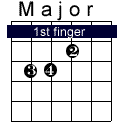
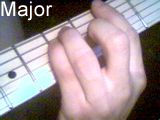
Which Chord Is It? Depending on the fret your 1st finger barres determines what chord you are playing. For example, in an open E chord, the open E string is the root. The E chord barre on the 1st fret is an F chord and so on. This is where learning the names of the frets comes in handy!
2.) A Shape Barre Chord

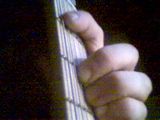
Whatever note that you use on the A string as your root is the name of the chord. For example, if you moved the shape so that the root is on the 1st fret, you’ll have an A# chord. If you move it to the 2nd fret, you got a B, and so on…
Alternate Fingering
Here is a popular alternative way of playing the A style barre chord. It’s the same form with the exception of the missing note on the high E string. It used a lot because it’s an easier fingering than the full barre chord.
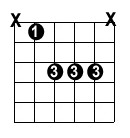
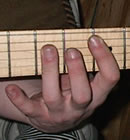
3.) Em Barre Chord Shape
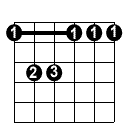
Alternate Fingering
Here is a popular alternative way of playing the E minor style barre chord. It’s the same form with the exception of the missing notes on the 5th and 6th strings. It is used a lot because it’s an easier fingering than the full barre chord. Since we’re just omitting 2 notes we don’t need a new fret/chord chart, because this pattern is still basically the same.
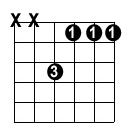
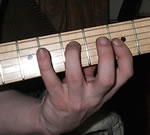
4.) Am Shape Barre Chord
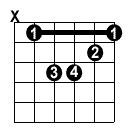
Alternate Fingering
Here is a popular alternative way of playing the A minor style barre chord. It’s the same form with the exception of the missing note on the 5th string. It is used a lot because it’s an easier fingering than the full barre chord.
